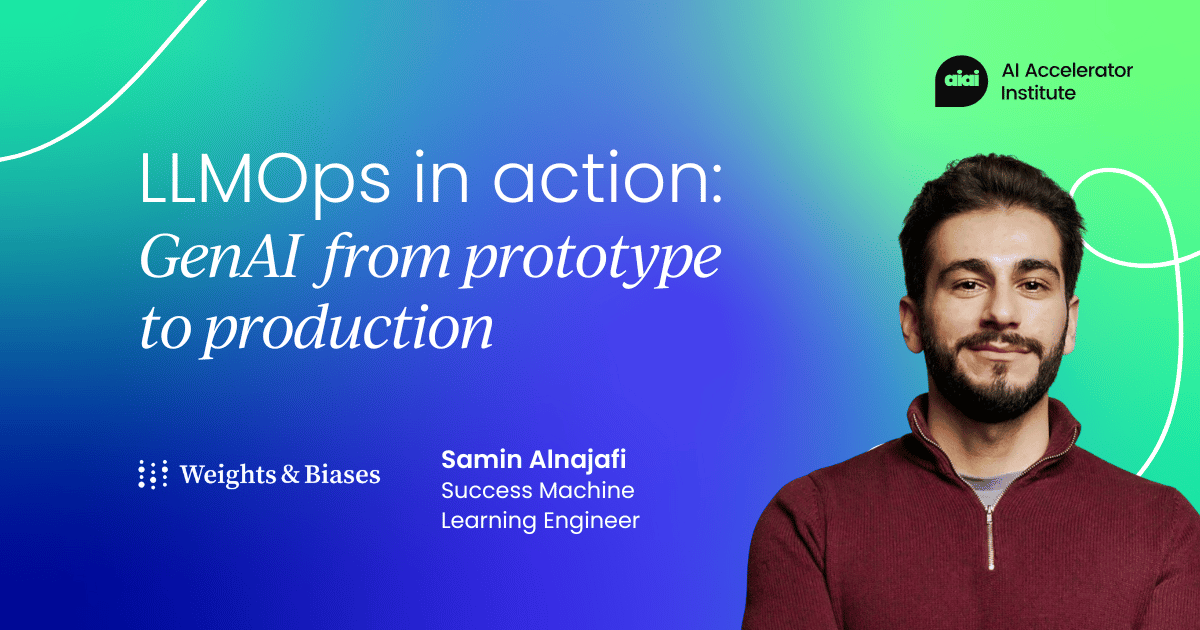Have you ever asked generative AI the same question twice – only to get two very different answers?
That inconsistency can be frustrating, especially when you're building systems meant to serve real users in high-stakes industries like finance, healthcare, or law. It’s a reminder that while foundation models are incredibly powerful, they’re far from perfect.
The truth is, large language models (LLMs) are fundamentally probabilistic. That means even slight variations in inputs – or sometimes, no variation at all – can result in unpredictable outputs.
Combine that with the risk of hallucinations, limited domain knowledge, and changing data environments, and it becomes clear: to deliver high-quality, reliable AI experiences, we must go beyond the out-of-the-box setup.
So in this article, I’ll walk you through practical strategies I’ve seen work in the field to optimize LLM performance and output quality. From prompt engineering to retrieval-augmented generation, fine-tuning, and even building models from scratch, I’ll share real-world insights and analogies to help you choose the right approach for your use case.
Whether you’re deploying LLMs to enhance customer experiences, automate workflows, or improve internal tools, optimization is key to transforming potential into performance.
Let’s get started.
The problem with LLMs: Power, but with limitations
LLMs offer immense potential – but they’re far from perfect. One of the biggest pain points is the variability in output. As I mentioned, because these models are probabilistic, not deterministic, even the same input can lead to wildly different outputs. If you’ve ever had something work perfectly in development and then fall apart in a live demo, you know exactly what I mean.
Another well-known issue? Hallucinations. LLMs can be confidently wrong, presenting misinformation in a way that sounds convincing. This happens due to the noise and inconsistency in the training data. When models are trained on massive, general-purpose datasets, they lack the depth of understanding required for domain-specific tasks.
And that’s a key point – most foundation models have limited knowledge in specialized fields.
Let me give you a simple analogy to ground this. Think of a foundation model like a general practitioner. They’re great at handling a wide range of common issues – colds, the flu, basic checkups. But if you need brain surgery, you're going to see a specialist. In our world, that specialist is a fine-tuned model trained on domain-specific data.
With the right optimization strategies, we can transform these generalists into specialists – or at least arm them with the right tools, prompts, and context to deliver better results.
LLMOps in action: How we move GenAI from prototype to production
Struggling to get your GenAI prototype into production? Discover how LLMOps helps streamline deployment – fast, scalable, and reliable.

Four paths to performance and quality
When it comes to improving LLM performance and output quality, I group the approaches into four key categories:
- Prompt engineering and in-context learning
- Retrieval-augmented generation (RAG)
- Fine-tuning foundation models
- Building your own model from scratch
Let’s look at each one.
1. Prompt engineering and in-context learning
Prompt engineering is all about crafting specific, structured instructions to guide a model’s output. It includes zero-shot, one-shot, and few-shot prompting, as well as advanced techniques like chain-of-thought and tree-of-thought prompting.
Sticking with our healthcare analogy, think of it like giving a detailed surgical plan to a neurosurgeon. You’re not changing the surgeon’s training, but you’re making sure they know exactly what to expect in this specific operation. You might even provide examples of previous similar surgeries – what went well, what didn’t. That’s the essence of in-context learning.
This approach is often the simplest and fastest way to improve output. It doesn’t require any changes to the underlying model. And honestly, you’d be surprised how much of a difference good prompting alone can make.
2. Retrieval-augmented generation (RAG)
RAG brings in two components: a retriever (essentially a search engine) that fetches relevant context, and a generator that combines that context with your prompt to produce the output.
Let’s go back to our surgeon. Would you want them to operate without access to your medical history, recent scans, or current health trends? Of course not. RAG is about giving your model that same kind of contextual awareness – it’s pulling in the right data at the right time.
This is especially useful when the knowledge base changes frequently, such as with news, regulations, or dynamic product data. Rather than retraining your model every time something changes, you let RAG pull in the latest info.
#Ai, #Approach, #Arm, #Article, #Articles, #Awareness, #Box, #Brain, #Building, #Content, #Course, #CustomerExperiences, #Data, #Datasets, #Deploying, #Deployment, #Development, #Engine, #Engineering, #Events, #Finance, #Foundation, #FoundationModels, #Genai, #Generative, #GenerativeAi, #Generator, #Giving, #Hallucinations, #Health, #Healthcare, #History, #How, #HowTo, #InContextLearning, #Industries, #Insights, #Issues, #It, #Language, #LanguageModels, #LargeLanguageModels, #Law, #Learning, #Llm, #LLMOps, #LLMs, #Medical, #Members, #MembershipContent, #Misinformation, #Model, #Models, #News, #Noise, #One, #Optimization, #Pain, #Performance, #Plan, #Power, #ProductData, #Production, #PROMPTENGINEERING, #Prompting, #Prompts, #Prototype, #RAG, #Regulations, #Reports, #REST, #RetrievalAugmentedGenerationRAG, #Risk, #Salary, #Scalable, #Search, #SearchEngine, #Setup, #Sounds, #Surgery, #Templates, #Time, #Tips, #Tools, #Training, #TrainingData, #Transform, #Tree, #Trends, #Tuning, #Work, #Workflows, #World, #ZeroShot
Published on The Digital Insider at https://is.gd/S7NgxS.
Comments
Post a Comment
Comments are moderated.